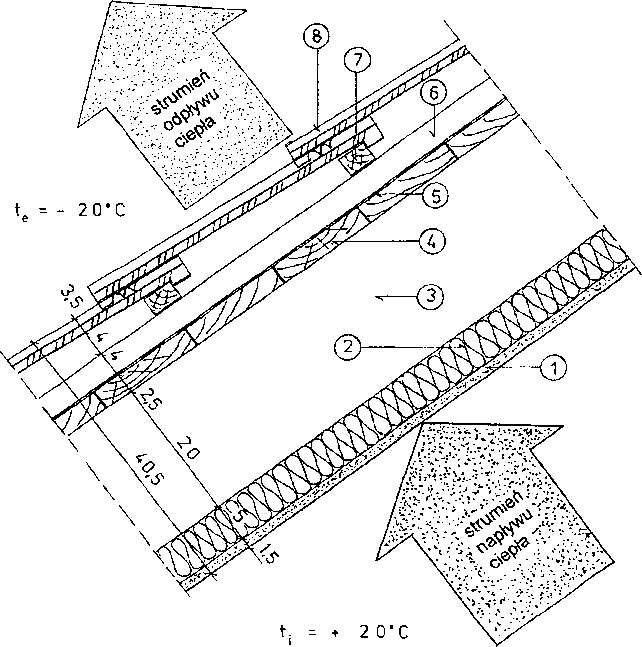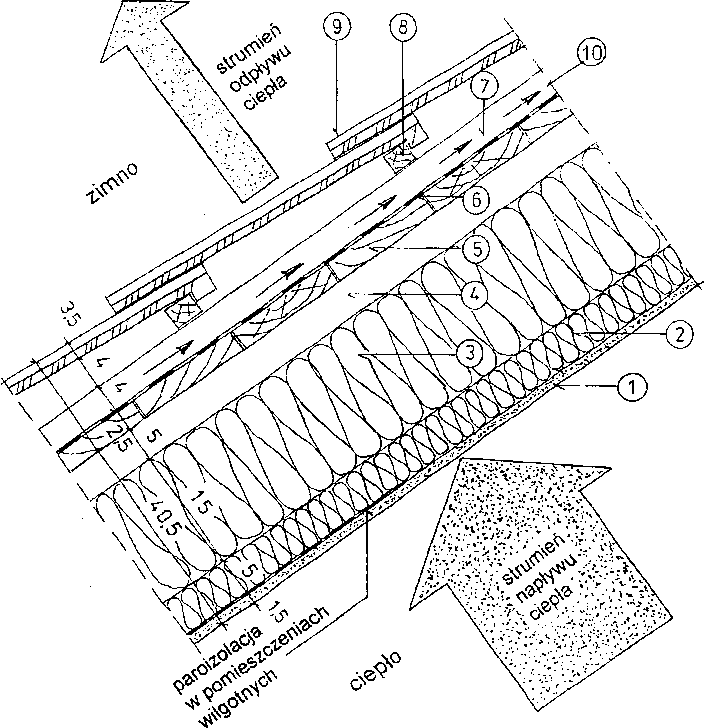The thermal insulation properties of the partitions are characterized by the heat transfer coefficient, denoted by the letter U. This coefficient determines the amount of heat flowing through a m² of partition in time 1 hours, when the air temperature difference on both sides of this partition is 1 degree. Inverse of the heat transfer coefficient (HU) is called heat transfer resistance or thermal insulation and is marked with the letter R.
The thermal resistance of a partition depends on its thickness and the thermal conductivity coefficient λ [W/(mK)]. Because it is calculated from the formula R = d / λ [m²K/W], therefore, the smaller the coefficient λ, the greater the resistance. You can also say, that the greater the thermal resistance, the more effective partition insulation and the warmer the house.
The value of the thermal conductivity coefficient is the basic parameter characterizing the thermal insulation layer of a partition. The smaller its value, the better the insulation of the partition. The volumetric weight of the thermal insulation material affects the size of the thermal conductivity coefficient, because there is a simple relationship between these parameters, tj. the lower the volumetric weight, the lower the thermal conductivity coefficient, that is, the better thermal insulation.
Heat flows to the outside through a poorly insulated sloping partition in the residential attic
 Fragment przekroju przegrody o dużym kącie nachylenia poddasza mieszkalnego, insulated with particle-cement board (supreme). Large losses of heat passing through a poorly insulated flat roof are visible: 1 – internal ceiling plaster, 2 – suprema plates, 3 – roof rafter, 4 – formwork on rafters, 5 – windproofing, 6 – board (years) ranged, 7 – roof battens, 8 – overlap tile
Fragment przekroju przegrody o dużym kącie nachylenia poddasza mieszkalnego, insulated with particle-cement board (supreme). Large losses of heat passing through a poorly insulated flat roof are visible: 1 – internal ceiling plaster, 2 – suprema plates, 3 – roof rafter, 4 – formwork on rafters, 5 – windproofing, 6 – board (years) ranged, 7 – roof battens, 8 – overlap tile
Heat flow to the outside through a partition with adequate insulation.
 Little heat transfer (simplified diagram) through a well-insulated sloping attic partition. Thermal insulation made of mineral wool boards, thick 15 cm, located between the rafters: 1 – internal ceiling plaster, 2 – suprema plates, 3 – insulation with mineral wool boards, 4 – roof rafter, 5 – formwork on rafters, 6 – windproofing, 7 – board (years) ranged, 8 – roof battens, 9 – overlap tile, 10 – ventilated air gap
Little heat transfer (simplified diagram) through a well-insulated sloping attic partition. Thermal insulation made of mineral wool boards, thick 15 cm, located between the rafters: 1 – internal ceiling plaster, 2 – suprema plates, 3 – insulation with mineral wool boards, 4 – roof rafter, 5 – formwork on rafters, 6 – windproofing, 7 – board (years) ranged, 8 – roof battens, 9 – overlap tile, 10 – ventilated air gap
Maximum values of the heat transfer coefficient for walls, ceilings and flat roofs are given in the tables. The maximum value of the U-value of the flat roof at the outside temperature t> 16° C is Umax ~ 0,30 [W/(m2K)], therefore the corresponding minimum value of the thermal resistance of an insulated roof is = 3,333 [(m2K)/W]. These values are related to the required thickness of the thermal insulation layer of the flat roof.